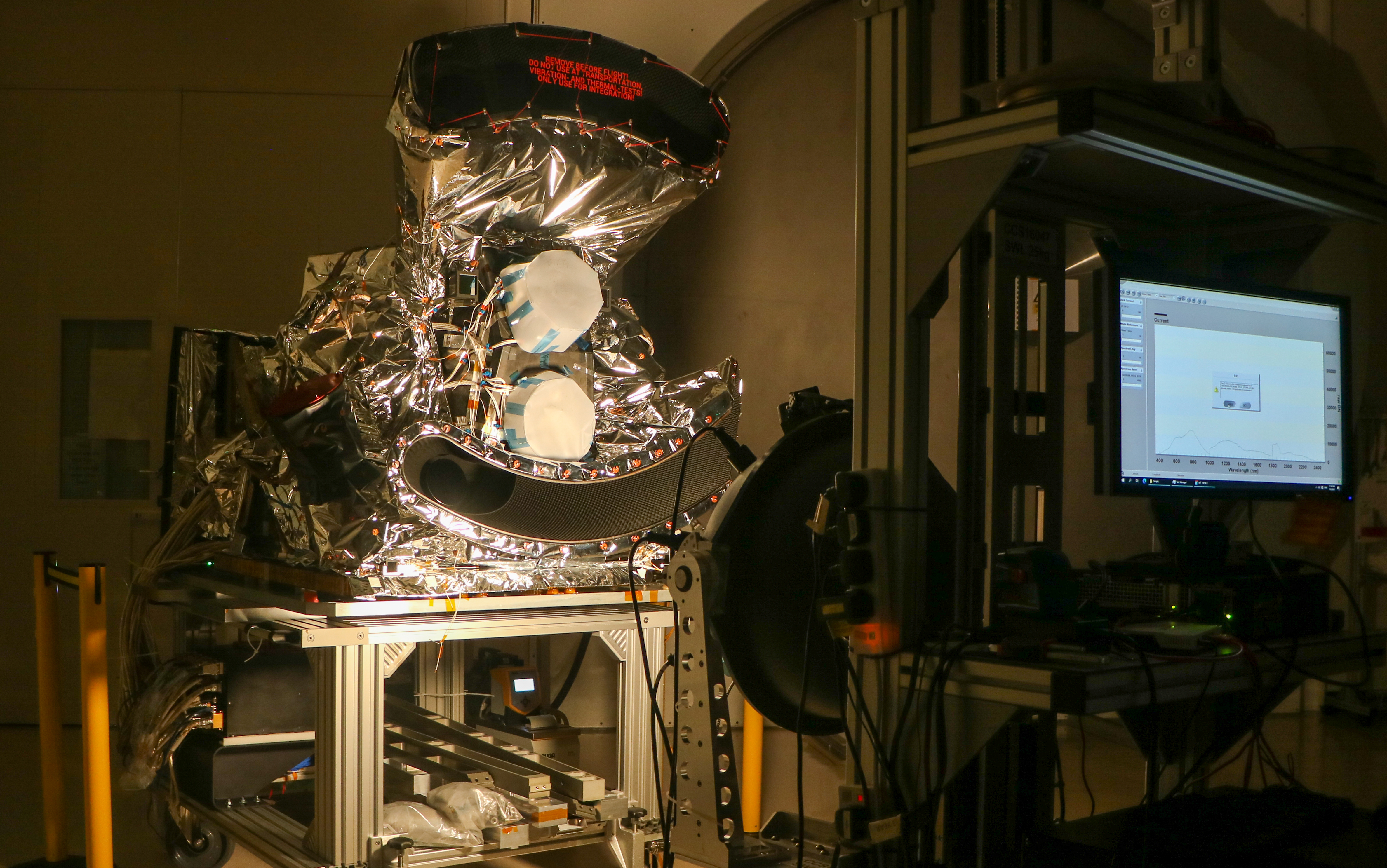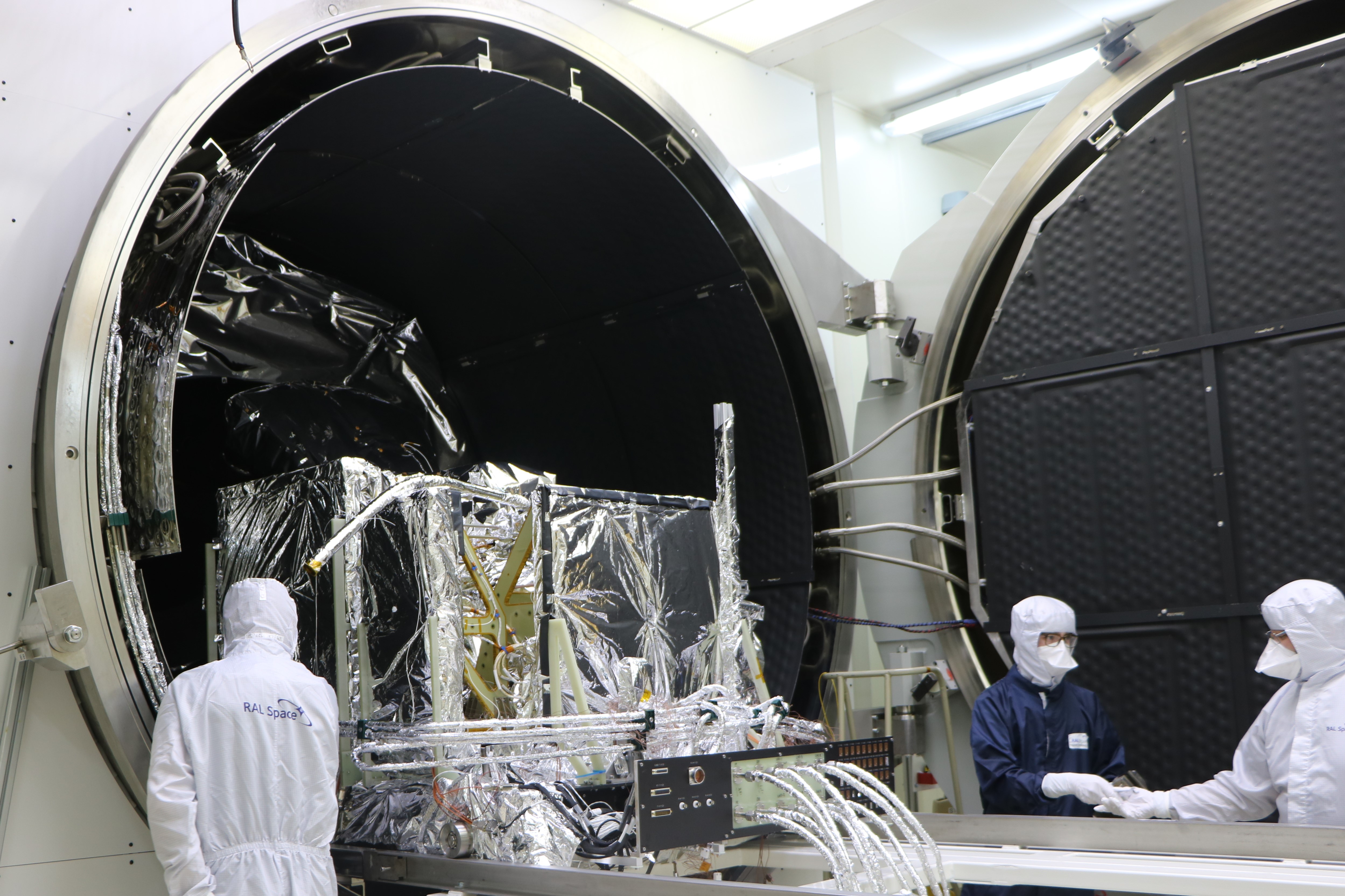
SLSTR-D in the clean room at RAL Space. Credit: STFC RAL Space / Leonardo
After an intensive test and calibration campaign at RAL Space, the fourth SLSTR instrument has been shipped from the Rutherford Appleton Laboratory in Oxfordshire to Florence, Italy, ready to be integrated onto the fourth in the European Space Agency (ESA) and EUMETSAT's Sentinel-3 series of satellites.
The European Commission's Copernicus Earth observation programme is made up of a family of satellites called the Sentinels. Each Sentinel mission provides a unique set of observations, and sometimes consists of more than one satellite to provide daily global coverage. The Sentinel-3 mission provides land and ocean data to support ocean forecasting systems and environmental monitoring. The SLSTR instruments that will fly on each Sentinel-3 satellite provide highly accurate measurements of global Earth surface temperatures.
Two Sentinel-3 satellites are already in orbit, with the latest (Sentinel-3B) launching from Russia in April 2018. RAL Space scientists and engineers were involved in the design, development, and calibration of the SLSTR on the in-orbit Sentinel-3A and -3B satellites, as well as a partial test campaign for the SLSTR for Sentinel-3C, which left RAL in 2020. Sentinel-3C and 3D are due to launch in 2025 and 2028 respectively to replace the current A and B satellites when they reach the end of their operational lives.

SLSTR-D emerging from RAL Space's 3m space test chamber after its thermal test campaign. Credit: STFC RAL Space / Leonardo
SLSTR builds on the dataset of global surface temperatures collected by the Along-Track Scanning Radiometer (ATSR) series on ERS1, ERS2 and ENVISAT. Originally developed by a UK consortium led by RAL Space, the ATSR series are considered among the most accurate remote sensing instruments in terms of data calibration. As such, the data from ATSR are used as a reference for other satellite instruments measuring sea surface and land surface temperature.
Thanking RAL Space's SLSTR team, Maria Kiiski-Latronico, project manager at RAL Space said:
"The completion of the full calibration for SLSTR Model D is an important milestone. I am pleased and honoured that I had the opportunity to work on this project and with such a brilliant project team.
This great endeavour has been possible thanks to our team’s efforts, not just over the past few months, but over the years that RAL has been involved with the entire SLSTR series of instruments.
We have received exceptional support from across RAL Space, and I'm very proud of the hard work and dedication shown by our team throughout the campaign."
Dr David Smith, SLSTR Calibration Lead Scientist added:
“The completion of the SLSTR-D calibration is an important step on the journey to measure Sea Surface Temperatures from space for climate monitoring that started with the Along Track Scanning Radiometer. Understanding the changes in the Earth's climate system needs high accuracy and repeatable measurements of surface temperature, and I'm proud of our involvement in such an important mission."
